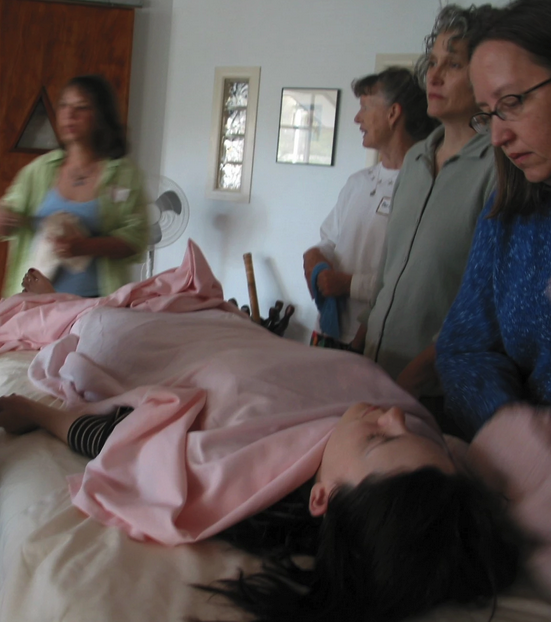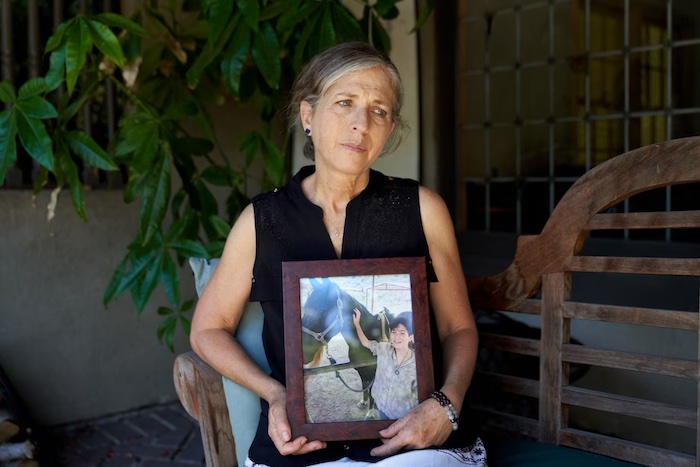
By Glen R. Horst MDiv, DMin, BA
Family members or close friends may choose to be involved in washing and dressing the body after death has occurred. Caring for a body is not easy and can stir up strong emotions. See Moments After a Death. Many people turn to health care providers and funeral directors for help. They find comfort and assurance in entrusting the body to those who provide professional services. The deceased may have left instructions for their after-death care to be handled by the health care team and chosen funeral home. Other people practice religions or belong to communities that view care of the body as a family responsibility. Their faith community, elders or neighbours provide guidance and support for hands-on care of the body. For some, this is a way of honouring the person – a final act of kindness to him or her.
This article outlines the steps involved in the care of the body after death.
In advance of the death
Talk to the health care team in advance about family or friend involvement in after-death care. You may also want to talk to the health care team about the supplies and assistance that will be required.
Washing, dressing and positioning the body
Washing and dressing the body is an act of intimacy and sign of respect. Those who were most involved in the person’s physical care may feel the most comfortable in doing this. Continued respect for the person’s modesty is essential.
Regardless of whether the person died at home or in hospital, hospice or nursing home, washing and positioning the body is best done where death occurs before stiffening of the body (rigor mortis) sets in. Rigor mortis happens within two to seven hours after death. Regardless of the location of care, you may need four to six people to help in gently moving and turning the body.
At home, you can wash the body in a regular bed. However, a hospital bed or narrow table will make the task easier. Since the body may release fluids or waste after death, place absorbent pads or towels under it. It is important to take precautions to protect yourself from contact with the person’s blood and body fluids. While you are moving, repositioning and washing the body, wear disposable gloves and wash your hands thoroughly after care.
Washing the person’s body after death is much like giving the person a bath during his or her illness.
1. Wash the person’s face, gently closing the eyes before beginning, using the soft pad of your fingertip. If you close them and hold them closed for a few minutes following death, they may stay closed on their own. If they do not, close again and place a soft smooth cloth over them. Then place a small soft weight to keep the eyes in position. To make a weight, fill a small plastic bag with dry uncooked rice, lentils, small beans or seeds.
After you have washed the face, close the mouth before the body starts to stiffen. If the mouth will not stay shut, place a rolled-up towel or washcloth under the chin. If this does not provide enough support to keep the mouth closed, use a light-weight, smooth fabric scarf. Place the middle of the scarf at the top of the head, wrapping each end around the side of the face, under the chin and up to the top of the head where it can be gently tied. These supports will become unnecessary in a few hours and can be removed.
2. Wash the hair unless it has been washed recently. For a man, you might shave his face if that would be his normal practice. You can find step-by-step instructions in the video Personal Hygiene – Caring for hair.
3. Clean the teeth and mouth. Do not remove dentures because you may have difficulty replacing them as the body stiffens.
4. Clean the body using a facecloth with water and a small amount of soap. Begin with the arms and legs and then move to the front and back of the trunk. You may need someone to help you roll the person to each side to wash the back. If you wish, you can add fragrant oil or flower petals to your rinse water. Dry the part of the body you are working on before moving to another. Some families or cultures may also choose to apply a special lotion, oil or fragrance to the person’s skin.
5. Dress or cover the body according to personal wishes or cultural practices. A shirt or a dress can be cut up the middle of the back from the bottom to just below but not through the neckline or collar. Place the arms into the sleeves first and then slipping the neck opening over the head, tucking the sides under the body on each side.
6. Position the arms alongside his or her body and be sure the legs are straight. If the person is in a hospital bed with the head raised, lower the head of the bed to the flat position.
The Canadian Integrative Network for Death Education and Alternatives (CINDEA) has a video series on post-death care at home that includes videos on “Washing the Head, Face, and Mouth”, “Washing the Body”, “Dressing the Body”.
Next steps
If a funeral home is assisting with the funeral, cremation or burial, call to arrange for transport of the body to their facility. If the death has occurred in a hospital, hospice or long-term care facility, the staff will arrange for the body to be picked up by the funeral home of your choice. In hospital, once the family agrees, the body is moved to the morgue and kept there until transported to the funeral home.
If your family is planning a home funeral or burial, cover the body in light clothing so it will stay as cool as possible. A fan, air conditioning, dry ice or an open window in the room where you place the body will help to preserve it.
See also: Planning a Home Funeral
For more information about providing care when death is near or after a death, see Module 8 and Module 9 of the Caregiver Series.
For additional resources and tools to support you in your caregiving role visit CaregiversCAN.
Complete Article ↪HERE↩!










